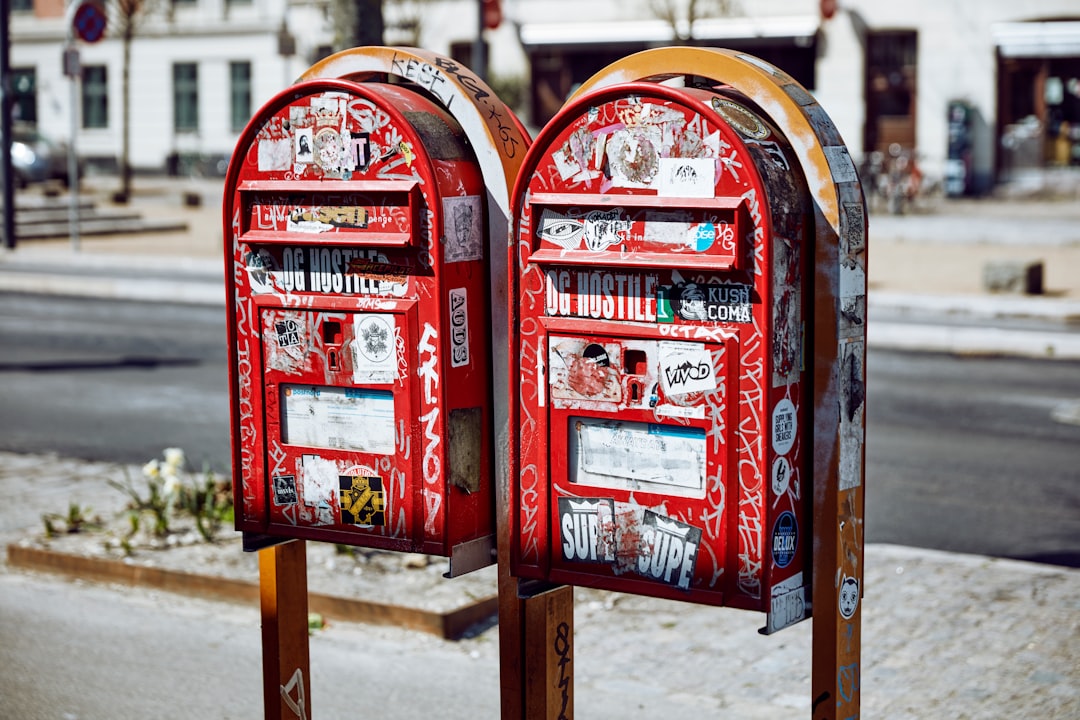

Engage prospects with a scan and streamline customer engagement with FREE QR code marketing tools by Sona – no strings attached!
Create a Free QR CodeFree consultation

No commitment

Engage prospects with a scan and streamline customer engagement with FREE QR code marketing tools by Sona – no strings attached!
Create a Free QR CodeFree consultation

No commitment
Direct mail advertising companies face a shifting landscape, where the gap between offline outreach and online accountability challenges marketers to demonstrate tangible ROI. Missed opportunities and incomplete insight into high-value prospects often occur when offline interactions are disconnected from digital tracking. As buyer behavior grows more complex, traditional methods such as response cards or static mailers can leave critical engagement and budgets invisible within the CRM.
Integrating QR codes has proven to be a strategic lever for bridging this offline-to-online gap, enabling recipients to instantly act on direct mail by scanning and connecting with digital experiences. This innovation not only simplifies the response process but also increases transparency, making it possible to know which businesses or households are engaging, even if they remain anonymous at the outset. With QR codes, direct mail campaigns are elevated; response rates surge, conversion data becomes accessible, and follow-ups can be triggered when form submissions fall short. For more on bridging mail and mobile, see this overview of direct mail marketing.
As marketers adopt multi-touch, data-driven approaches, QR codes unlock new dimensions in tracking, personalization, and audience segmentation. This empowers direct mail advertising companies to identify missed prospects, enrich audience profiles, and attribute offline engagement to concrete revenue outcomes. This guide explores practical strategies for integrating QR codes to close attribution loops, ensure no valuable lead slips through, and turn every mail piece into a catalyst for meaningful, measurable engagement. Explore Sona QR’s direct mail use case for practical examples.

QR codes are redefining campaign measurement and targeting in direct mail, helping companies resolve longstanding pain points such as unidentified prospects and lost conversions. When you transform static outreach into data-rich, conversion-focused touchpoints, you turn every mailer into a performance asset and every scan into a measurable signal. This means replacing lengthy URLs and paper reply devices with instant, mobile-first actions that reduce friction and improve the customer experience. For broader tactics, see Sona QR’s guide to QR codes in marketing.
Outdated analog processes continue to drag down performance: reply cards get lost or delayed, long URLs are mistyped, and call centers miss after-hours inquiries. QR codes streamline these workflows by connecting print to digital destinations that can book appointments, start chats, or complete purchases in seconds. The result is a faster funnel with less drop-off and a clear line from mail cost to revenue.
Modern QR management platforms streamline setup, routing, and analytics. By replacing manual processes with trackable QR campaigns, direct mail advertisers reduce wasted spend and close the loop on prospect engagement. Tools like Sona QR let you generate dynamic codes, update destinations after printing, and synchronize scan data to your CRM for timely follow-ups and accurate attribution. Start creating QR codes for free.

Persistent challenges in direct mail such as anonymous website visitors, untracked offline responses, and fragmented campaign data have limited campaign efficiency and ROI. Historically, marketers mailed high-quality creative and relied on lagging indicators such as coupon redemptions or reply mail to get a read on performance. This left too much guesswork in planning, optimization, and budget allocation.
QR codes change the equation. They act as the offline trigger for a digital journey that can be measured end to end. When a recipient scans, you capture a timestamp, a channel source, and device details, then connect that activity to a landing page and conversion action. The result is near real-time visibility into which audiences respond, where they engage, and what content prompts action. See practical tactics for direct mail advertising.
For companies struggling with missed attribution or lead leakage, QR codes offer a transparent path to revenue accountability and operational improvement. They equip teams to shift from static reporting to active optimization that protects budget and lifts ROI.

Campaign objectives and audience context should determine the QR code format you choose. For direct mail advertisers, the best format is the one that delivers the next step with the least friction and the most measurable intent.
Dynamic codes are consistently favored for campaign work because they allow editable destinations, richer analytics, and audience-level reporting. Static codes can still be useful for evergreen collateral or fixed destinations, but they lack the agility required for most performance-driven mail.
When in doubt, select dynamic QR codes so you can adapt to performance trends and external changes. Platforms like Sona QR make it straightforward to generate, brand, and route these formats while maintaining centralized analytics.
Growth opportunities abound wherever QR codes transform passive touchpoints into actionable moments. Direct mail has always excelled at targeting, creativity, and physical presence. Adding a QR code to those assets amplifies their impact with immediacy and measurability.
Start by mapping your current mail formats and the actions you want recipients to take. Then identify where scans can remove friction and reveal intent. From acquisition to retention, QR codes create new signals you can use to improve conversion and lifetime value.
Prioritize placements with the highest intent and the least digital friction. QR-enabled journeys help you capture mid-funnel interest that would otherwise be lost, then route it to sales or automated nurture based on engagement.

Each use case should solve a concrete challenge while making it easier for recipients to act. By matching the QR destination to the mailer’s promise, you reduce confusion and speed up conversion.
When you connect each use case to a clear outcome and a purpose-built destination, you close the loop between creative outreach and measurable pipeline impact. Over time, the data you collect informs segmentation, improves offers, and increases the efficiency of every mail dollar.
Each scan is a behavioral signal: what offer resonated, which format captured attention, and how close the recipient might be to purchase. By deploying multiple QR codes across your mail ecosystem, you can automatically segment audiences and tailor follow-up.
That segmentation becomes the backbone of efficient retargeting. Instead of relying on broad lists or outdated assumptions, you build audiences that reflect real intent and recency. The result is more relevant messaging, higher conversion rates, and better use of media spend.
Direct mail advertisers benefit most when QR data enriches contact records and informs orchestration across channels. Your mail is the spark; your segmentation and retargeting turn that spark into a sustained, conversion-focused journey.
Disconnected campaigns create inconsistent experiences and waste budget. QR codes unify offline and online efforts by turning every physical asset into a trackable digital entry point. The outcome is tighter orchestration, better reporting, and faster iteration.
To integrate effectively, align creative and offers across channels so each scan picks up a consistent narrative. Use centralized analytics to evaluate paths from first scan to final conversion, then reallocate spend to the formats and messages that pull hardest. For attribution frameworks, read Sona’s blog post titled Single vs Multi-Touch Attribution Models.
With a platform like Sona QR, you can manage all codes, monitor performance, and sync scan data to your CRM and ad platforms. The result is a connected funnel that treats every scan as a meaningful, trackable touch.
The best QR campaigns start with clear goals and a tight alignment between the physical environment and the digital destination. Think through where your recipients will be standing or sitting when they scan, what they expect to happen next, and what friction you can remove from that moment.
Use this checklist to plan, deploy, and optimize. Build from small wins, then scale to additional formats and audiences once you have proven scan-to-conversion performance.
Clarify what success looks like and how the QR destination will deliver that outcome. Prioritize objectives where legacy methods left attribution gaps such as appointments, in-store visits, or e-commerce transactions.
Pick the format that supports your objective and reporting needs. If you require attribution, testing, and edits after print, dynamic codes are the right choice.
Design choices have a direct impact on scan rates. The code must be easily seen, understood, and scanned from common distances in realistic lighting conditions.
Choose placements and formats that match audience behavior. Start with your most responsive list segments or your highest-margin offers to maximize early learning and ROI.
Real-time analytics allow you to optimize while the campaign is live. The goal is to lift scan-to-conversion rates, not just scan volume.

Lack of precise tracking historically made it difficult to connect offline interest to downstream revenue. Direct mail marketers often knew how many pieces went out and how many coupons came back, but they did not know which creative or segment produced the best customers or where prospects dropped out of the journey. QR-enabled analytics correct this by capturing the complete path from scan to sale.
Adopting a measurement mindset begins with tagging every code and destination. Treat each scan as an identifiable touch that should be tied to a campaign, creative, and audience. Then, enrich these events with conversion points that correspond to business outcomes such as booked meetings, store visits, or transactions.
With Sona QR and Sona, you can move beyond basic scan counts. Sona connects anonymous scans to known buyers through identity resolution and multi-touch attribution, then ties QR engagement to pipeline contribution. For deeper context on measurement, read Sona’s blog post titled The Importance of Accurate Revenue Attribution.
QR programs improve over time as you refine messaging, creative, and follow-up. The most successful teams treat QR as a persistent capability rather than a one-off tactic. They build processes that make every new mail drop more intelligent than the last.
Focus on tips that align with your media mix and buyer journey. If your mail skews toward acquisition, prioritize offers and landing pages that remove friction from first actions. If you run loyalty and retention programs, lean into app downloads, mobile wallets, and account management flows.
Creative deployments keep audiences engaged. For example, include a QR on a limited-time loyalty postcard that adds the offer to Apple Wallet or Google Wallet, or place a QR on service invoices that pre-fills renewal details to speed checkout. These touches increase convenience and capture richer attribution data. For additional best practices, here are reasons to use QR codes in mail.
The direct mail landscape is evolving quickly as marketers demand attribution, speed, and personalization. Top-performing providers differentiate by unifying data and creative, offering dynamic QR management, and integrating with CRM and marketing automation systems. They combine precise targeting with real-time reporting to prove impact and steer investment.
Market trends favor hybrid campaigns that pair highly targeted mail with digital remarketing. Companies that deploy dynamic QR codes with robust analytics often report higher response rates and lower acquisition costs compared with mail-only programs. Leaders also invest in modular creative that can be adapted by segment or geography, then validated through QR-driven testing. Meanwhile, laggards still rely on static offers and opaque reporting, which makes it difficult to optimize or secure future budget. See more practical guidance on QR codes in direct mail.
As privacy norms evolve and third-party cookies decline, direct mail paired with QR codes becomes more valuable. It generates first-party engagement signals that can be used for segmentation and measurement without invasive tracking. Expect more brands to shift budget toward trackable print that feeds identity-resolved funnels and account-based strategies.
Direct mail programs that connect offline to online consistently outperform those that do not. Industry data shows that campaigns using dynamic QR codes can lift response by double-digit percentages, often around 20 to 35 percent, by reducing friction and creating measurable paths to action. The most meaningful gains occur when teams align creative, offers, and destinations to the audience’s stage in the journey. See additional context on QR in direct mail.
Consider a B2B technology provider that sent account-based event invitations with QR codes tied to unique landing pages. Scans identified which accounts were exploring the event agenda, and the team used this signal to trigger personalized ads and SDR outreach. The result: a fourfold increase in qualified meetings and clear attribution from mail to pipeline. In retail, a national cataloger replaced generic URLs with QR codes that added personalized offers to mobile wallets. Redemption rates rose, and the brand finally connected catalog spend to in-store and online sales with confidence.
Experts emphasize two core practices. First, treat the destination as part of the creative. A great QR experience starts on paper but succeeds on the phone screen, so design the mobile path with the same care as the mailer. Second, close the loop. Sync scan and conversion data to systems of record and make sure sales and service teams know what was promised in the mail. These steps prevent missed follow-ups and ensure that marketing and sales act on the same signals.
QR codes have become an essential part of the direct mail advertising playbook, offering actionable solutions to persistent challenges like lost attribution, outdated data, and fragmented buyer journeys. They make it simple for recipients to take the next step and equally simple for marketers to measure the result. When you add dynamic QR codes to your mailers, you transform print from a static medium into a live channel that can be optimized in real time.
Direct mail advertising companies that thoughtfully integrate QR codes can bridge the offline-online divide, resolving the pain of missed high-value prospects and incomplete campaign data. Through modern tracking, audience segmentation, and CRM integration, each mailer becomes an opportunity for measurable engagement and pipeline growth. Adopting best practices for QR deployment lays the foundation for smarter targeting and end-to-end attribution, turning direct mail into a responsive, results-driven channel that delivers customer value and business outcomes. Tools like Sona QR make it easier to manage codes, track performance, and connect scans to revenue. Start creating QR codes for free.
QR codes have transformed direct mail advertising companies from traditional outreach methods into dynamic, data-driven conversion engines. By integrating QR codes, these companies can not only enhance customer acquisition but also deliver personalized, interactive experiences that boost engagement and measurable results. Imagine knowing exactly which mailers prompt immediate action, allowing you to optimize campaigns on the fly and maximize ROI.
With Sona QR, direct mail campaigns become smarter and more effective. Create dynamic, trackable QR codes in seconds, update your messaging without reprinting, and connect every scan directly to revenue streams. No more guesswork—just actionable insights that turn every piece of mail into a powerful conversion tool. Start for free with Sona QR today and transform your direct mail efforts into a seamless path to sales growth.
QR codes bridge the offline-to-online gap by enabling instant digital engagement, increasing response rates, enabling real-time tracking, and simplifying follow-up actions.
QR codes enhance measurability, reduce friction for recipients, allow dynamic content updates without reprinting, provide detailed analytics, and improve cost efficiency and conversion rates.
Industries using high-volume mailers, event-related outreach, account-based marketing, loyalty programs, and localized campaigns benefit most from QR code integration.
Success is measured by tracking scans, engagement metrics like form starts and completions, conversions, and connecting this data to CRM systems for closed-loop revenue attribution.
Design QR codes with clear, benefit-driven calls to action, ensure high visibility using contrast and whitespace, use dynamic codes for flexibility, test usability on various devices, and align the code destination with campaign goals.
Dynamic QR codes allow destinations and offers to be updated after printing, support detailed analytics, enable audience-level reporting, and provide flexibility for campaign adjustments.
Common formats include web links to mobile landing pages, vCards for contact saving, prefilled SMS or email messages, app download links, and prefilled forms or surveys.
Each scan acts as a behavioral signal to segment audiences by action, offer, location, and timing, enabling personalized follow-up and syncing segments to CRM and ad platforms for targeted retargeting.
Steps include defining clear use cases, selecting dynamic QR code types, designing and testing codes for usability, deploying codes where impact is highest, and monitoring performance to optimize scan-to-conversion rates.
QR codes create trackable digital entry points from physical mail, enable unified creative and offers across channels, improve reporting and attribution, and support coordinated follow-up via email, SMS, and digital ads.
Use Sona QR's trackable codes to improve customer acquisition and engagement today.
Create Your FREE Trackable QR Code in SecondsJoin results-focused teams combining Sona Platform automation with advanced Google Ads strategies to scale lead generation

Connect your existing CRM

Free Account Enrichment

No setup fees
No commitment required

Free consultation

Get a custom Google Ads roadmap for your business






Launch campaigns that generate qualified leads in 30 days or less.
